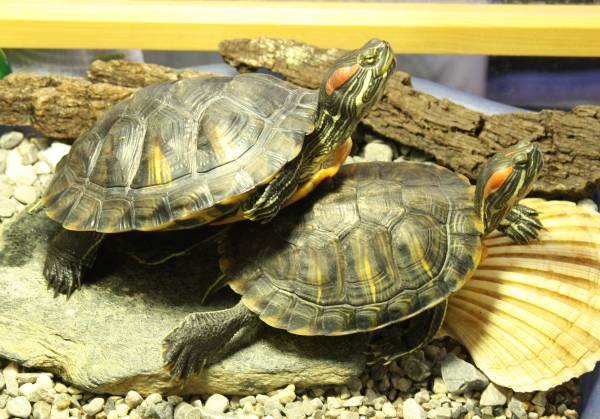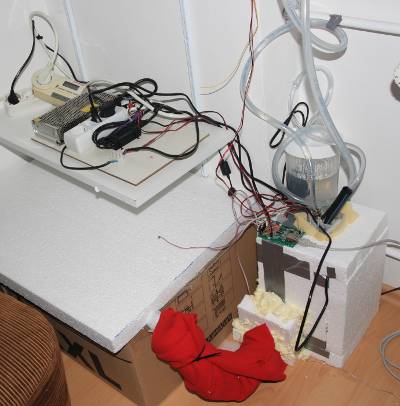Turtle hibernation system
Executive summary
We have two turtles who need to hibernate every winter. Last year it was very difficult (I over-engineered) but this year it’s looking better, and there’s cool graphs to monitor their health!
Our turtles and their home
We have two red snapper turtles, Arthur and Turok:
During the summer, they enjoy the huge (700l) aquarium in our living room
…but in the winter they should go into hibernation… They would survive without a yearly hibernation cycle, but it’s better for their health to go into hibernation.
Hibernation System 1.0
Last year I built a custom refrigerator:
This was a great learning experience (microcontroller programming, peltier elements, heat exchange, insulation, pumps, warm/cold water cycles…), but unfortunately not so effective… I was plagued with teething problems such as defective peltier elements, slime in the heat exchanger, ice crystalising in the warm water cycle… which resulted in a few unhealthy warm spikes in the otherwise stable “winter”…
Optimal hibernation
On recommendation from the local reptile institute we do the following hibernation sequence:
- Over a 4 week period reduce the hours of sunlight (150W full spectrum lamp over their island) and water temperature from the regular “summer” (10 hours/day at 25°C) to “winter” (3 hours/day at room temperature 20°C) over 6 weeks. The regular aquarium lighting is also reduced from 12 hours/day to 6 hours/day (we can’t afford to let the plants and fish go so dark…).
- Stop feeding 5 days before transfer to reduced activity phase.
- For the reduced activity phase before complete hibernation transfer from the large tank (we can’t cool such a huge mass of water in our living room any lower than room temperature) and place into a smaller tank at ~15C in the cellar with only one hour of light per day.
- Stay in reduced activity for about a week.
- Transfer into individual small tanks (just big enough so they can turn around) with water temperature at 12°C and water level just over the shell (so the turtle can easily lift head to breath if necessary, but is completely submerged otherwise) and place in the temperature controlled refrigerator.
- Reduce the temperature in the refrigerator by 1°C every 2 days until tank temperature is at about 6°C.
- Every 2-4 weeks during the ~4 months of hibernation:
- Change the water (should be done every week the first 3 weeks because they may still dirty the water with excrement, but it is ok if they don’t empty their bowels for hibernation!)
- Weigh the turtle (a total weight loss of up to 10% during hibernation is acceptable, any more and an early spring should be induced)
- Check for any signs of sickness
- About 3-4 months do the same again in reverse…
Hibernation Control System 2.0
The software making the data visible
Using the powers of Dancer, Plack, Starman, and jqPlot, I put a small web app together to display the data. Here’s a post about implementing the web application.
You can follow any responses to this entry through the RSS 2.0 feed. Both comments and pings are currently closed.



January 5th, 2012 at 10:55
Dude, that’s *AWESOME*. I’ve had turtles for the better part of 20yrs now, though we chose long ago to not put them into hibernation each winter. Have two females in the dining room in a 160 gallon tank, and a male in a 30 gallon that sits next to my desk.
January 6th, 2012 at 02:24
Thanks for the compliments! I’d like to have an aquarium near my workplace too… thinking of a micro with shrimps.
Also been looking at control systems for Aquariums (lights, temperature, air …) and wow… expensive! I think my next project will have to be an intelligent aquarium control system.
January 25th, 2012 at 10:44
Can you put hires photo of aquarium setup?